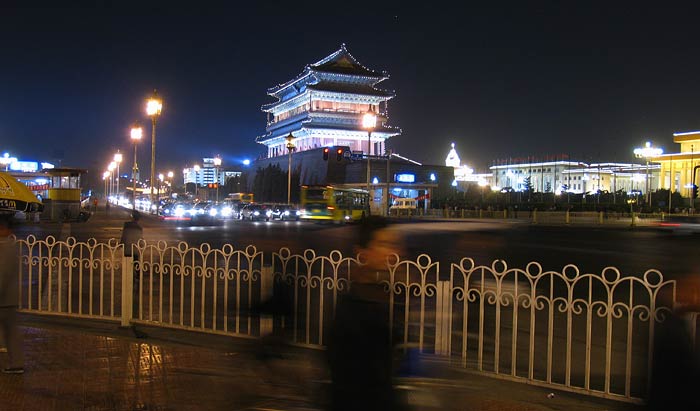| Fast Load Version | S P E C I A L T R
A V E L  R E P O R
T R E P O R
T |
|
Jump All photos by the author. |
The Big Picture The year of the 8M image is now. With Sony's DSC-F828 compact cameras entered the 8-megapixel era. Nikon, Olympus, Minolta, Sony and Canon all have models using the same image chip technology. Most use an RGB color filter array (CFA) but Sony paints their chip with green alternating with emerald filters to achieve a slightly more refined sense of color. Too bad for them that their chip/lens combo throws out some fairly heavy Purple Fringing (no, it's not a song from Prince, it's a phenomenon caused in corner areas when high contrast lighting is present). Canon has low PF in the PowerShot Pro1. But what I really want to know is why this wasn't called the Pro8? It's a bit smaller than the other 8-meggers (the Sony is huge and fast in both f-stop and speed of operation) but the Canon has the easiest menu system with direct, unambiguous, fast-acting menu items and overall high level ergonomics. I could have saved myself a lot of weight by simply carrying this camera all over China, but it isn't as quick in its autofocus and shutter release as the dSLRs. Its 8M image is quite good. Only the Sony image exceeds it among the 8M cameras and that's due in large part to the Sony custom CFA. Let's put it this way: The largest printer under a grand these days is about 13 inches (330mm) wide. The 8M images will print this big in their narrow dimension producing crowd-pleasing results. I've seen many museum images this size with less pictorial detail. If you have a large coat, the Pro1 may fit inside a pocket. As a backup camera, it takes up only a corner of a modest dSLR camera bag.  Beijing, Tian Tan Park at extreme tele.  This means you.  To capture very slow shutter shots like this, use the Continuous Frame drive and toss out the ones that are not stable.  Definition of "Chinese Red."  Everybody at the Center of the Universe, raise your hand. Working with the Pro1 Menu ergonomics and external controls are top notch. The zoom is controlled in a fly-by-wire turning collar that fits the hand easily. The only thing better than this sort of zoom actuator is a direct physical link such as is found on dSLR lenses (and the Sony 828).  Everyone with a red hat; this way! The plus features with Custom settings instantly accessible are commendable and the build quality is A+. For thinking photographers, the next-to-largest frame size is not the desirable 5M image dimension, it is the 4M size of 2272 x 1704 pixels. That means you can't shoot at the optimum down-sample size of 80% (2592 x 1944 pixels) appropriate to the full frame capture (3264 x 2448 pixels) while enjoying a 40% memory saving without apparent image degradation.  Airport lights. With the Pro1, the 4M option is still OK, and images captured with it will be quite pixel-perfect, plus memory savings will be in the 60+% range, but some small detail loss compared to full frames will be visible. Olympus, Nikon, Minolta and Sony do provide this 5M option. Had it been available to me, I would have used it, too.
All rights reserved. Do not reprint. Do not link to images. Reprinting except for newsworthy mention and brief quotes are by permission only |
 Canon Pro1
Canon Pro1
 Get
the eBooks
Get
the eBooks